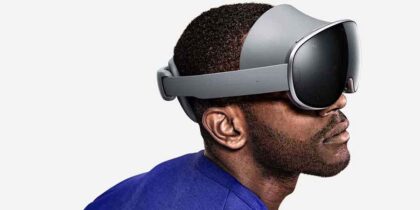Change is the only constant in retail. Supply chain breakdowns, labor shortages, and system outages are just a handful of the disruptions retailers face. At the same time, customers are becoming more demanding and tech-savvy, raising expectations for seamless service and personalized experiences. Against this backdrop, technologies like AI are evolving rapidly, forcing retailers to adapt on both the customer and operational fronts.
It’s a difficult landscape to navigate. And yet, the greater challenge often lies within the enterprise: how people respond to this constant barrage of change. In our survey of change agents, nearly one-third of retail managers said resistance begins before implementation even starts—a reminder that hesitation takes root early and can shape the entire rollout.
Resistance isn’t irrational. In a recent study, “Industrial-Organizational,” psychologist Dr. Yochi Cohen-Carash found that resistance to change often begins when people feel a loss of control or predictability in their daily work.1 Here are some findings:
- Change leaders facing hesitation early: about 30% of resistance begins before implementation even starts
- Department heads wrestle with execution gaps: roughly 67% of participants cite insufficient training as a key driver of resistance.
- Frontline employees cling to the familiar: around 70% of users continue using the old system after rollout
These data suggest that resistance to change affects both end-users and change agents. Change leaders look for clearer communication; department leads for better resources; and employees for steady reassurance to calm their fears.
Importantly, resistance is about the process of implementing change, rather than the new technology at the heart of the change.
According to Dr. Cohen-Charash, these data are not signs of failure. Instead, they serve as indicators for leaders to attend, understand, and utilize for more effective change implementation.
New technology can simultaneously create and help resolve resistance. Technology can help meet the above-cited needs for communication, resources, and reassurance. Technology offers new possibilities even as it disrupts established routines.
The following explores how each group confronts change and how their view of technology shapes the journey.
The CEO perspective
Chief executives are not always expected to initiate change: only 16.7% of retail change initiatives are initiated by leadership; however, it is critical that they extend support and promote any change. Also, if leaders are absent at the start, skepticism builds. In fact, more than half (58%) of participants cite poor communication as one of the most significant drivers of resistance.
Employees don’t just want to be told what is changing. They want to understand why. CEOs who explain the strategic purpose and connect the change to broader business goals create stronger buy-in.
C-suite leaders often view new technology as both a growth engine and a reputational risk. CEOs set the vision, while CIOs ground it in technical reality and play a decisive role in technology decisions. Many executives are excited about the prospect of AI and automation streamlining operations and unlocking new revenue streams. However, they worry about ROI, security, and the fallout of a failed rollout. That’s why clear success metrics and strong communication are essential for leaders before they commit to large-scale adoption.
At the end of the day, messaging matters most: when leaders frame change as an opportunity to improve outcomes for employees and customers, adoption is more seamless. But vision alone isn’t enough. Once the strategy is set, the weight of execution falls to department leads who are responsible for translating high-level goals into everyday workflows. And for nearly three-quarters of them, that process is described as “somewhat challenging.”
The department lead perspective
If leadership drives the vision, department leads carry the burden of execution. A majority of leads point to workflow disruptions, technical difficulties, and time pressures as significant challenges during implementations. For department leads who translate strategy into day-to-day realities while fielding pushback from frontline staff, the process can be draining.
According to Dr. Cohen-Carash’s data, user guides, peer champions, and one-on-one coaching are some of the most successful strategies when implementing change. Department leads who embed champions inside teams see smoother adoption, while those who rely solely on top-down directives struggle.
More than others, department heads feel the push and pull of promise versus disruption when it comes to tech. They welcome tools that automate manual tasks and improve analytics, yet they rank workflow interruptions, integration headaches, and time pressures among their biggest hurdles. Training gaps and user frustration weigh heavily, even as they recognize the long-term productivity gains once systems finally stabilize.
And so, the takeaway is clear: support systems must be distributed, not centralized, if change is going to stick. That’s where employees come in. Why? Because no matter how well leaders and department heads prepare, change ultimately succeeds or fails at the front line.
The employee perspective
Frontline employees aren’t just participants in change—they are the deciding factor in whether it takes hold. Yet the majority (82%) of end-users are brought in only at the pilot stage or later. By then, resistance is already taking root. Only 18% of end-users are consulted before implementation, where resistance starts.
Training gaps amplify the challenge. While many employees receive some form of training, 40% lack basic training programs, 50% lack technical support systems, and 60% lack peer support.
When it comes to tech, frontline staff focus on usability and support. They appreciate features like real-time inventory and mobile POS that make daily tasks easier. However, three-quarters cited workflow disruption and insufficient training as key drivers of resistance. Many stick with familiar systems even when the new technology is objectively better, and some worry about automation replacing roles.
Despite these barriers, sentiment from employees is not overwhelmingly negative. The change managers described more than 80% of end-users’ feedback as “mixed but mostly positive” or “positive.” The findings suggest that the implementation process, rather than the technology itself, is the main source of resistance
According to Dr. Cohen-Charash, organizations gearing up for a new technology rollout could engage employees’ involvement with the change early on, and identify champions—those already eager for change—and equipping them with extra training and one-on-one coaching to promote the change among their peers. Positioned inside their own teams, these champions could model new workflows and share practical tips, helping peers build confidence while easing concerns long before launch.
From resistance to empowerment
Across every level, the numbers tell the same story: Resistance arises from a lack of communication, insufficient training, and workflow disruption—not from an inherent rejection of technology. And because resistance often surfaces before rollout, it’s a signal that organizations need to involve stakeholders earlier and adjust their plans along the way.
Practical steps stand out:
- C-suite leaders need to champion change visibly
- Department leads need to equip teams with peer-level support
- Early engagement with employees – they need to be brought into the journey before systems go live
In retail, where disruption is constant, the ability to navigate change and resistance provides a clear competitive edge. Those who hone it position themselves for faster adoption, stronger teams, and higher returns on technology investments.
Ready to turn retail resistance into empowerment? Explore how CEOs, department leads and frontline employees can drive faster adoption and stronger ROI through clear communication and early engagement. Learn how Samsung solutions help retailers deliver a better customer and employee experience.
1 Resistance to Change: Implementing Samsung’s Technology Among Retailers, Yochi Cohen-Charash, Samsung Retail Innovation Summit, 24 April 2025
Resistance (and other reactions) to Change. Yochi Cohen-Charash, Samsung Frontline Worker Summit, 26 August 2025








